In this post, we’ll explore the differences between live and dead rock, how to create a reef tank using either option, and the benefits and drawbacks of each.
Live Rock:
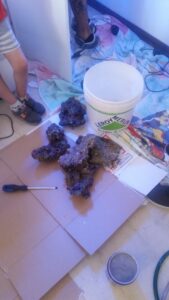
Live rock is a term used to describe rocks that are harvested from the ocean and contain living organisms. These organisms include bacteria, algae, and various invertebrates like sponges, corals, and crustaceans. Live rock is an essential component of any reef tank, as it provides a natural habitat for marine life and helps maintain a healthy ecosystem.
When adding live rock to your tank, it’s important to ensure that it’s properly cured. Curing live rock involves removing any dead or decaying matter from the rock, as well as any harmful organisms that may be present. This process can take several weeks, but it’s necessary to ensure that the rock is safe for your tank.
One of the biggest benefits of using live rock in your reef tank is that it helps create a natural environment for your marine life. The organisms that live on the rock provide food and shelter for your fish and invertebrates, helping to promote a healthy ecosystem.
One of the biggest drawbacks of using live rock in your tank is the cost. Live rock can be expensive, especially if you’re using wild-caught rock. Additionally, you’ll need to purchase enough rock to create a suitable habitat for your marine life, which can add up quickly.
Another drawback of live rock is that it can introduce unwanted organisms into your tank. While curing the rock can help reduce the risk of harmful organisms, there’s always a chance that something could slip through. This can lead to problems like algae blooms, parasites, and other issues that can be difficult to control.
Dead Rock:
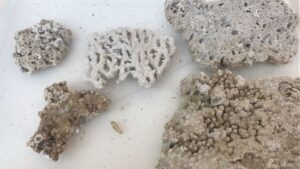
Dead rock is a term used to describe rocks that do not contain any living organisms. This type of rock is often used as a base for creating a reef tank, as it provides a stable foundation for live rock to be added later.
When using dead rock in your tank, it’s important to ensure that it’s properly cleaned and sterilized. This helps reduce the risk of introducing harmful organisms into your tank, as well as any unwanted debris or pollutants that may be present.
One of the biggest benefits of using dead rock in your reef tank is the cost. Dead rock is significantly less expensive than live rock, which can help reduce the overall cost of setting up your tank.
Dead rock also provides a stable foundation for live rock to be added later. This can help ensure that your tank has a solid structure and can support the weight of your marine life. Additionally, dead rock can be molded and shaped to create interesting and unique structures in your tank.
Another benefit of dead rock is that it doesn’t introduce unwanted organisms into your tank. As long as it’s properly cleaned and sterilized, you can be confident that it won’t bring any harmful parasites or bacteria into your ecosystem.
One of the biggest drawbacks of using dead rock in your reef tank is that it doesn’t provide the same level of natural habitat as live rock. While it can serve as a foundation for live rock, it doesn’t contain the same beneficial organisms that help promote a healthy ecosystem.
Another drawback of dead rock is that it can be less aesthetically pleasing than live rock. While you can mold and shape it to create interesting structures, it doesn’t have the same natural beauty of live rock.
Regardless of whether you choose to use live or dead rock in your reef tank, the process of setting up your tank will be similar. Here below some tips:
Strategically place rocks: While it’s tempting to pile rocks on top of one another, this can create dead zones where water becomes stagnant and harmful bacteria can grow. Instead, create a few key areas where your marine life can hide and explore, such as caves and arches. However, be sure to leave open space for swimming and water flow.
Ensure good water flow: To avoid dead zones, it’s important to have good water flow throughout the tank. Use a powerhead or other equipment to ensure water is circulating properly.
Use a reef-scaping guide: Consider using a “reef-scaping” guide to plan and design your rockwork layout. This will help you create a visually appealing and balanced setup. Personally I follow – MarcoRocks :you can find interesting information and many ideas
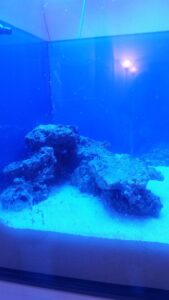
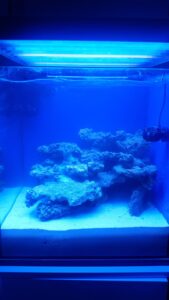
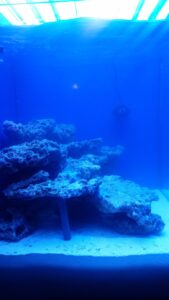
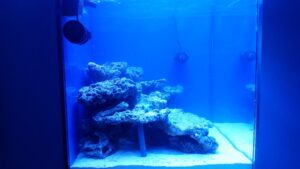
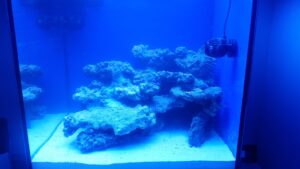
When it comes to creating a reef tank, choosing between live and dead rock is a personal decision. Live rock provides a natural habitat for marine life and helps maintain a healthy ecosystem, but it can be expensive and can introduce unwanted organisms into your tank. Dead rock is less expensive and doesn’t introduce unwanted organisms, but it doesn’t provide the same level of natural habitat as live rock.
Regardless of which option you choose, creating a reef tank is a rewarding and enjoyable hobby. With a little patience and care, you can create a beautiful and thriving ecosystem in your home.
Please follow and like us:
